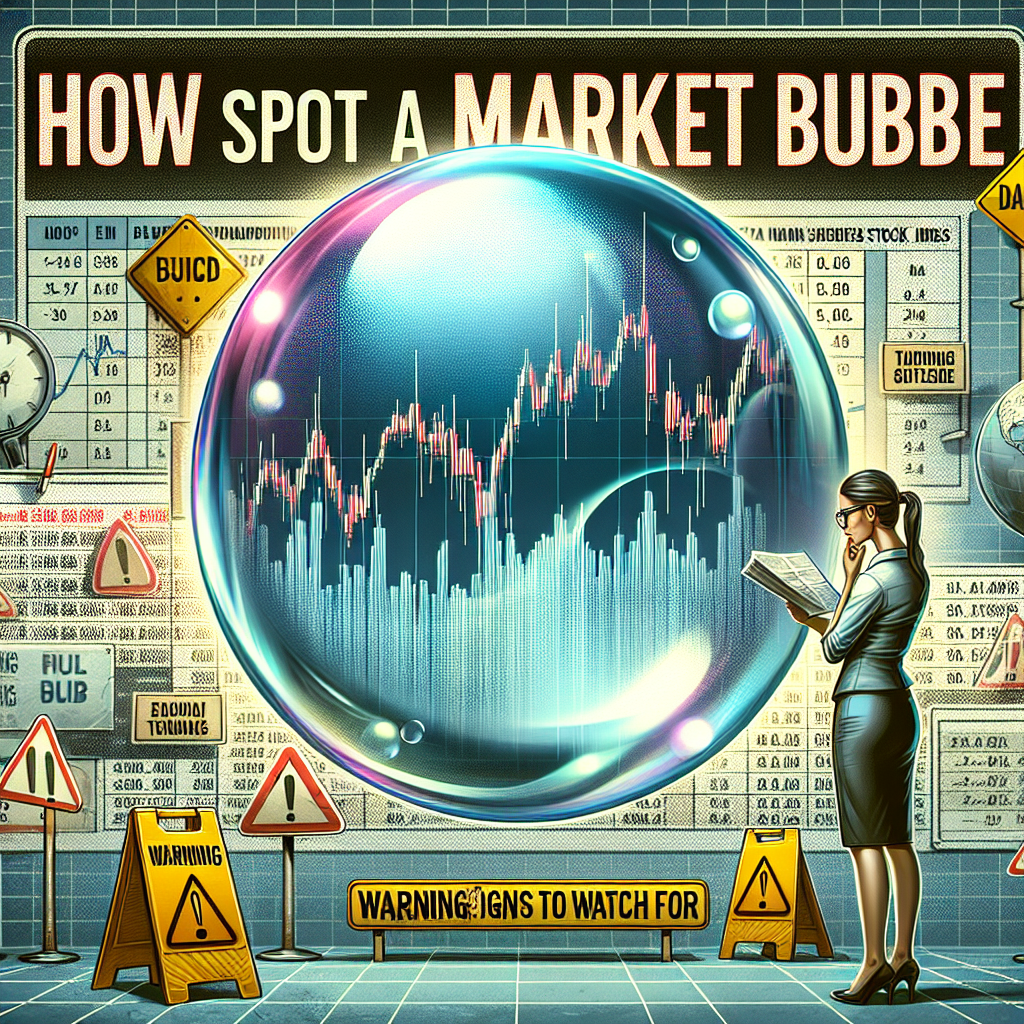In the world of investing, market bubbles can lead to significant financial losses if not recognized early. Understanding how to spot a market bubble is crucial for both novice and seasoned investors. This article will explore the warning signs to watch for, helping you make informed investment decisions.
What is a Market Bubble?
A market bubble occurs when the price of an asset dramatically exceeds its intrinsic value, usually driven by exuberant market behavior. Bubbles are typically characterized by rapid price increases followed by a sudden crash. Recognizing the signs of an impending bubble can save investors from making costly mistakes.
Warning Sign #1: Exponential Price Growth
One of the most significant indicators of a market bubble is exponential price growth. If you notice an asset’s price increasing rapidly without any fundamental changes to the underlying value, it’s a red flag. For example, during the Dot-com bubble of the late 1990s, tech stocks soared despite many companies not having viable business models.
Spotting Exponential Growth
To spot exponential growth, keep an eye on stock price charts and look for vertical lines that indicate steep rises. Compare these increases against industry benchmarks and economic indicators, such as earnings and revenue growth.
Warning Sign #2: High Levels of Speculation
When investors begin to buy assets not based on their fundamental value but for the potential of future resale profits, speculation reaches alarming levels. This behavior often leads to inflated prices and contributes to the formation of a bubble.
Indicators of Speculation
Watch for increased trading volumes, rising media attention, and stories of “get-rich-quick” investment strategies. If you’re hearing more people talk about an investment than actual market fundamentals, speculation may be rampant.
Warning Sign #3: Widespread Public Interest
While bubbles can start among a small group of investors, they typically explode into the wider public consciousness. If non-professional investors are flocking to buy an asset largely due to media hype or trends, consider it a warning sign of a bubble.
Assessing Public Sentiment
Monitor social media feeds, news articles, and investment forums. An influx of amateur investors discussing a specific asset can indicate that irrational exuberance is setting in, pushing prices unsustainably higher.
Warning Sign #4: Disconnection from Fundamentals
As a market bubble develops, there is often a growing disparity between asset prices and fundamental valuations. This detachment becomes a critical red flag, signifying that the market may be driven more by emotion than by economic reality.
Evaluating Fundamentals
Utilize valuation metrics like Price-to-Earnings (P/E) ratios, Dividend Yield, and Price-to-Book (P/B) ratios to assess whether an asset is overvalued. If these ratios are significantly higher than historical averages, it might indicate a bubble.
Warning Sign #5: Increased Leverage and Debt
A rise in borrowing among investors is frequently associated with market bubbles. When investors take on excessive debt to finance stock purchases, it can lead to a precarious market that is susceptible to sharp declines.
Watching for High Leverage Ratios
Keep an eye on margin debt levels and loan growth. If a significant percentage of new investments is being financed through borrowed funds, the market may be more vulnerable to shocks that can lead to a downturn.
Warning Sign #6: Historical Repetition
History has a way of repeating itself, and learning from past market bubbles can provide insights into current trends. Certain patterns often emerge prior to market crashes, allowing investors a chance to recognize bubbles early on.
Learning from Past Bubbles
Study historical market bubbles such as the Subprime Mortgage Crisis, the Tulip Mania of the 17th century, and the Bitcoin surge in late 2017. Recognizing similar indicators can help investors spot potential bubbles in the future.
Conclusion: Stay Vigilant
Spotting a market bubble requires keen observation and a critical outlook. By staying aware of exponential price growth, high levels of speculation, and disconnections from fundamentals, investors can arm themselves against potential losses associated with market bubbles. Understanding these warning signs is key to safeguarding your investments and navigating the often-turbulent waters of the financial market.
Key Takeaways
- Exponential Price Growth: Watch for rapid price increases without fundamental support.
- High Levels of Speculation: Increased trading volumes and media hype can indicate a bubble.
- Widespread Public Interest: When inexperienced investors take interest, be cautious.
- Disconnection from Fundamentals: Keep track of valuation metrics to spot overvaluation.
- Increased Leverage and Debt: Excessive borrowing can indicate market fragility.
- Historical Repetition: Study past bubbles to recognize current patterns.
By incorporating these insights into your investment strategy, you can more effectively identify and react to market bubbles, positioning yourself for long-term success in the financial landscape.

